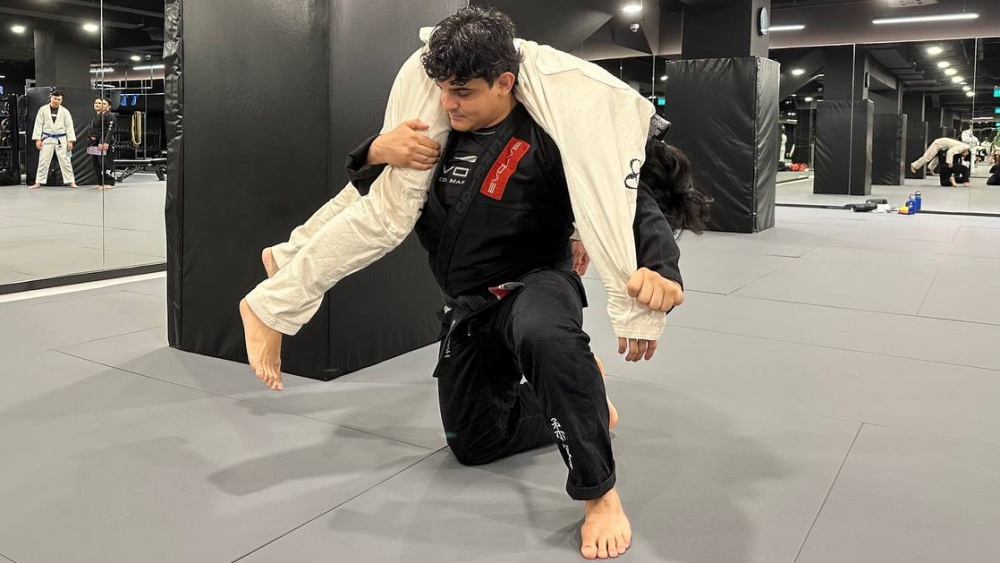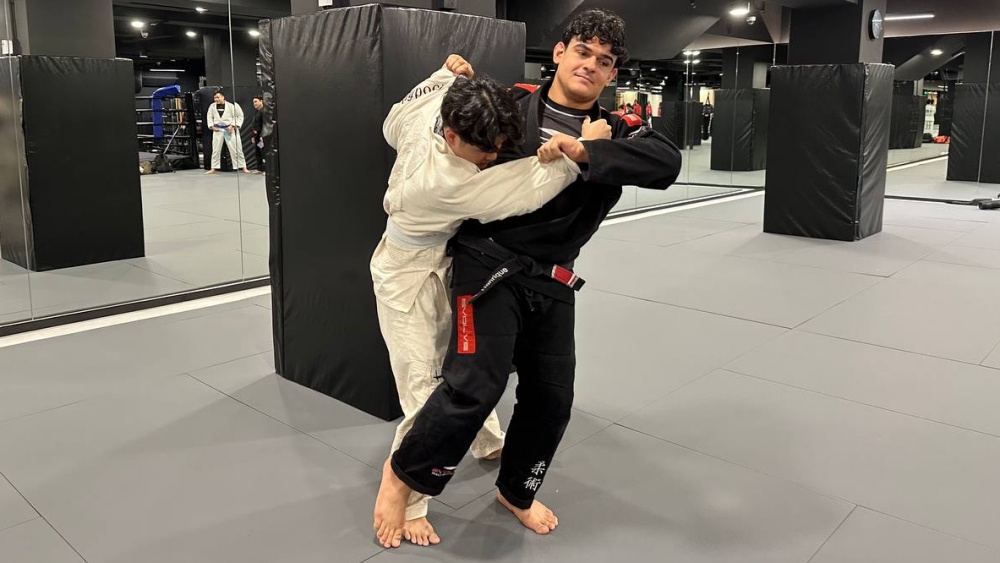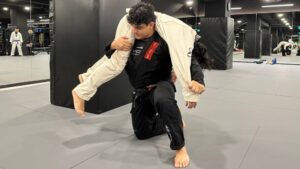Brazilian Jiu-Jitsu is a martial art known for its seemingly endless options to submit the opponent. One of the more unorthodox ways to tap someone is by using the bicep slicer. Although less commonly discussed than techniques like the armbar or triangle choke, the bicep slicer is a useful submission that can catch even seasoned practitioners by surprise. Today, we will go over the bicep slicer and how it can help improve your BJJ.
What Is The Bicep Slicer In BJJ?
The bicep slicer, also known as the bicep crusher or bicep lock, is a compression submission that targets the muscles and tendons of the upper arm, specifically the biceps brachii. Unlike joint locks that hyperextend or rotate a joint to create pain and potential injury, the bicep slicer uses the hard part of your body, typically a shin or forearm, to press into the opponent’s bicep while their forearm is bent. This creates intense pressure on the bicep muscle and surrounding tissues, leading to excruciating pain that often forces the opponent to tap out.
While the bicep slicer can be applied from various positions, it is most commonly seen in the context of failed armbar attempts, the closed guard, and even as a counter to certain submissions. The versatility of the bicep slicer makes it a valuable addition to any grappler’s submission arsenal, especially when used as a surprise attack.
Mechanics Of The Bicep Slicer
Understanding the mechanics of the bicep slicer is crucial for both executing the technique effectively and defending against it. The submission works by using a hard surface, such as your shin, forearm, or wrist, to act as a fulcrum against your opponent’s arm. As the opponent’s forearm is pulled toward the shoulder, the bicep is compressed against the fulcrum, causing discomfort to the muscles and tendons.
To apply the bicep slicer, you typically start by isolating your opponent’s arm. One common setup occurs when you attempt an armbar, and your opponent defends by locking their hands together. Instead of forcing the armbar, you can switch your focus to the bicep slicer by bringing your leg or forearm across their bicep. By pulling their forearm towards you while pressing down with your leg or arm, you create the necessary compression to finish the submission.
The key to a successful bicep slicer lies in the positioning and pressure. The fulcrum must be placed correctly against the thickest part of the bicep, and the pulling motion should be controlled and deliberate. Too much force can result in muscle tears or tendon damage, so it’s essential to apply the submission with caution, especially in a training environment.
Basic Setups For The Bicep Slicer
The bicep slicer can be set up from several positions, making it a versatile tool in your submission toolkit. One of the most common setups occurs during a failed armbar attempt. If your opponent defends the armbar by locking their hands together, you can transition to the bicep slicer by bringing your leg across their bicep and pulling their forearm towards you. This setup is effective because it capitalizes on your opponent’s defensive posture, turning their escape attempt into a submission opportunity.
Another setup occurs from the closed guard position. If your opponent is trying to pass your guard by pressuring forward, you can trap one of their arms and bring your leg over their shoulder, positioning your shin against their bicep. From here, you can pull their forearm towards their shoulder, applying the bicep slicer. This setup is particularly useful against opponents who like to drive their weight forward to pass the guard, as it uses their momentum against them.
The bicep slicer can also be applied as a counter to certain submissions. For example, suppose your opponent attempts a kimura or americana from side control. In that case, you can use your free arm or leg to create a fulcrum against their bicep, turning their submission attempt into a painful bicep slicer. This type of counterattack is highly effective because it takes advantage of your opponent’s focus on their submission, catching them off guard.
Safety Precautions And Application
While the bicep slicer is a legitimate and effective submission, it’s important to note that its legality varies depending on the competition ruleset. In many BJJ tournaments, the bicep slicer is considered an advanced technique and is therefore restricted or banned for lower belt levels. This is because the submission requires careful control to avoid unnecessary strain on the bicep muscle and tendons, especially if not executed or responded to in time.
For this reason, it’s essential to practice the bicep slicer with caution in the gym. When training with partners, always apply the submission slowly and give them ample time to tap out. Let your training partner know that you’re going for a bicep slicer so they can be prepared to tap if the pressure becomes too intense. As with any submission, safety should always be the top priority.
Defending Against The Bicep Slicer
Just as it’s essential to know how to apply the bicep slicer, it’s equally important to know how to defend against it. The best defense is prevention; maintaining good posture and keeping your arms close to your body can minimize the risk of getting caught in a bicep slicer. If you find yourself in a position where your opponent is attempting a bicep slicer, there are several steps you can take to defend against the submission.
First, try to alleviate the pressure by straightening your arm. Doing so reduces the compression on your bicep and makes it more difficult for your opponent to finish the submission. If straightening your arm isn’t possible, focus on creating space between your bicep and the fulcrum by pushing against your opponent’s leg or arm. This can help relieve some of the pressure and allow you to escape.
Another effective defense is to roll or turn in the direction of the submission. This movement can help to take some of the pressure off your bicep and may also allow you to reverse the position, putting you back in control. However, it’s important to act quickly. Escaping becomes much more difficult once the bicep slicer is fully locked in.
Conclusion
The bicep slicer is a powerful and effective submission that every BJJ practitioner should be familiar with. While it may not be as commonly used as other submissions, its versatility and potential for surprise make it a valuable addition to your grappling arsenal. Whether you’re using it as a follow-up to a failed armbar, a counter to an opponent’s submission attempt, or a standalone attack, the bicep slicer can be an excellent tool for training and competition.
You may also like:
Essential BJJ Etiquette Rules Every Practitioner Should Know

















